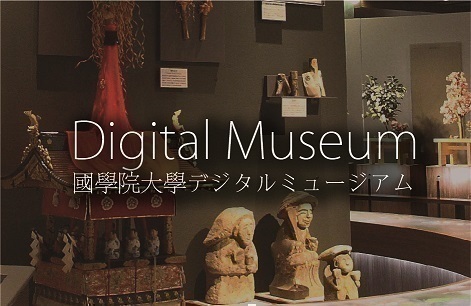- トップ
- Encyclopedia of Shinto
- Jingi shizoku
Encyclopedia of Shinto
| Main Menu: | |
| Links: |
詳細表示 (Complete Article)
| カテゴリー1: | 3. Institutions and Administrative Practices |
|---|---|
| カテゴリー2: | Ancient |
| Title | Jingi shizoku |
| Text | Hereditary priestly clans such as the Nakatomi, the Inbe, the Urabe and the Sarume who served the royal court from ancient times. Except for the Urabe, the members of these clans were all said to be descendants of kami who joined in assuaging Amaterasu when she hid herself in the heavenly rock cave. The Nakatomi, the Inbe, and the Sarume traced their ancestry to, respectively, Amenokoyane no mikoto, Amenofutodama no mikoto (see Futodama), and Amenouzume no mikoto. These deities also accompanied Ninigi no mikoto, the grandson of Amaterasu, when he descended from heaven. Thus, veneration of Amaterasu became the paramount duty of these deities on earth, a task that was passed on to their progeny. Among these priestly clans, the most powerful were the Nakatomi. During the reign of Kinmei (r. 539-571), Tokiwa no Ōmuraji was granted the surname Nakatomi, and thus the Nakatomi clan lineage system was founded. Tokiwa's grandchildren -- Mikeko, Kuniko, and Nukateko -- split the Nakatomi clan into three lineage groups. In the thirteenth year of Tenmu's reign (684), when the Eight Noble Titles (yakusa no kabane) ranking system was introduced, the Nakatomi were given the title of asomi. In the following year, all branches of the Nakatomi clan began to use the surname Fujiwara, which earlier had been bestowed upon their renowned ancestor Kamatari (614-669). However, in the second year of Monmu's reign (698), prior to that Tennō's daijōsai (Enthronement Ceremony), it was decreed that only the lineage of Fuhito (Kamatari's eldest son) would inherit the Fujiwara surname. Other lineages (such as Omimaro's) were to return to using the original name of Nakatomi, preserved from the mythical age, in order to serve the deities. After this, and throughout the Nara period, Nakatomi clansmen assumed and largely maintained the posts of director (haku, or kami) and vice-director (daifuku or daisuke) of the Jingikan (Department of Divinities). At the beginning of the Heian period, the post of saishu (chief priest) was initiated at the Grand Shrines of Ise (Ise Jingū), and this office was held concurrently by the vice-director of the Jingikan in a hereditary system. It is thought that the Urabe clan, which served the royal court with their skill of turtle shell divination (kiboku), descended from a clan subordinate to the Nakatomi. Initially, the Urabe played a supplementary role when the Nakatomi performed various purification rites (harae) such as the ōharae (Great Purification Rite). However, during the Heian period Urabe clansmen began to monopolize the position of miyaji, a ritual specialist who performed purification rites for the Tennō. Using this position as leverage, the Urabe eventually became independent of the Nakatomi, and its members even began to hold the vice-director's position at the Jingikan. The main line of the Inbe (忌部) clan traced their ancestry to Amenofutodama. Ranked beneath them were several collateral lineages: the Inbe of Awa, whose ancestor was Amenohiwashi no mikoto; the Inbe of Sanuki, whose ancestor was Taokihooi no mikoto; the Inbe of Kii, whose ancestor was Hikosashiri no mikoto; the Tamatsukuri of Izumo, whose ancestor was Kushiakarutama no mikoto; and the Inbe of Tsukushi and Ise, whose ancestor was Amenomahitotsu no mikoto. The main line coordinated the works of subordinate families, and together they prepared offerings (heihaku) and performed rituals when new palace buildings were constructed. Because of their military service during the Jinshin War (672), the main line of the Inbe was promoted from obito to muraji in the aristocratic ranking system. However, when the new Eight Title System was introduced in 684, the Inbe only received the title sukune, which was inferior to the the Nakatomi's title of asomi. At the start of the Heian period, although the Inbe changed the Chinese characters of its name to 斎部 (Inbe) and continued to serve the Jingikan, it was overshadowed by the Nakatomi clan. The Sarume clan served at the Bureau of the Wardrobe (nuidonoryō). Reenacting the role of their ancestor-deity Amenouzume no mikoto in the Takamanohara myth, Sarume women danced at the chinkonsai (Rite of Calming the August Spirits) and acted as heralds in the Daijōsai. The Sarume clan was politically weak, however, and during the Kōnin era (810-23), the Ono and the Wanibe clans seized the sustenance fields of the Sarume clan and submitted their own women to the court. The court sent out a directive prohibiting such acts. Hieda no Are, the woman involved in the Kojiki compilation, came from the Hieda family, a branch of the Sarume that settled in the Soekami District of Yamato Province. — Fujimori Kaoru |




